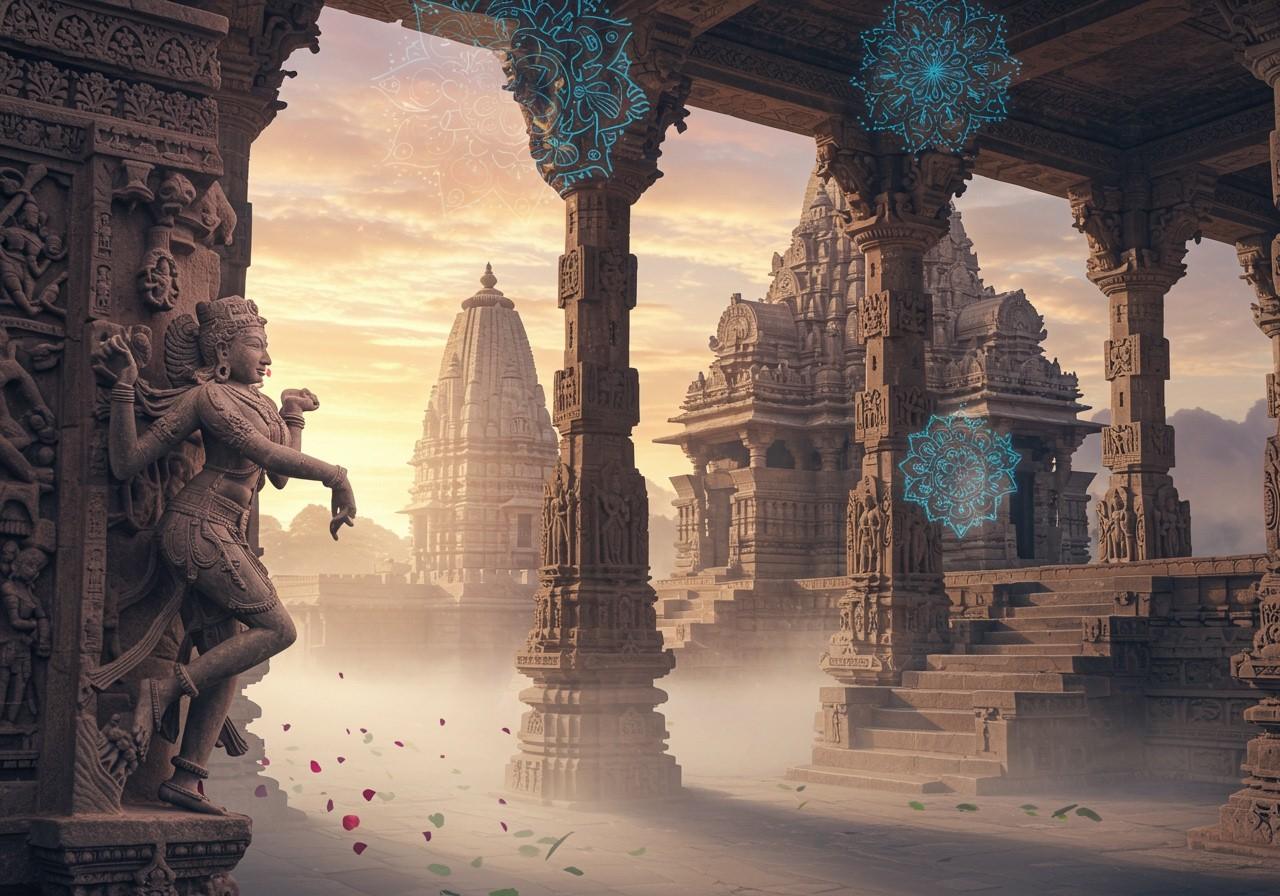
Explore the Varman Dynasty, an influential era in Indian history renowned for its enduring legacy in art, architecture, and cultural impact. This article delves into the historical context and significance of this prominent ruling family in ancient India, known for their contributions to religion, cultural practices, and monumental architecture, with a focus on key aspects such as the Ashwamedha Yagna, their religious beliefs, and the architectural marvels they constructed.
Historical Overview of the Varman Dynasty
The Varman Dynasty significantly shaped the history of ancient India. Emerging around the 4th century CE, their rise to power stemmed from strong leadership and strategic alliances. Controlling regions in present-day Assam, the dynasty distinguished itself through political achievements and a unique sociopolitical environment.
Prominent rulers like Bhaskaravarman played pivotal roles in expanding the dynasty’s influence. Their interactions with neighboring kingdoms, marked by both diplomacy and warfare, shaped regional politics. This era witnessed a blend of political stability and cultural flourishing under their reign.
The Ashwamedha Yagna
The Varman rulers performed the Ashwamedha Yagna, an important Vedic ritual, to assert their sovereignty. This elaborate ceremony involved the release of a consecrated horse, allowed to roam freely for a year. The territories traversed by the horse unchallenged were then claimed by the ruler who conducted the yagna.
This ritual, symbolizing divine sanction of their rule, served to consolidate their power. Specific instances of the Ashwamedha Yagna performed by Varman rulers carried significant political and religious weight, reinforcing their authority and elevating their status among their contemporaries.
Art and Architecture of the Varman Dynasty
The Varman Dynasty’s contributions to art and architecture are substantial and distinctive. Their unique style is evident in temple designs, sculptures, and inscriptions. Key characteristics include intricate carvings, grand temple structures, and detailed iconography.
Notable sites like the Kamakhya Temple exemplify their architectural prowess. These monuments are significant not only for their scale but also for the artistic techniques employed, often utilizing locally sourced materials. Varman artisans skillfully reflected the dynasty’s cultural and religious values in their creations, leaving an enduring mark on Indian architecture.
Religious Beliefs and Practices
The Varman Dynasty was recognized for its patronage of both Hinduism and Buddhism, fostering religious tolerance and syncretism. This allowed both faiths to thrive under their rule. Important religious practices included festivals, rituals, and the construction of temples and monasteries.
Their policies significantly impacted the cultural and spiritual lives of their subjects. Temples and Buddhist monasteries erected during this period evolved into vibrant centers of religious activity, attracting devotees from far and wide.
Cultural Influence and Legacy
The broader cultural impact of the Varman Dynasty on Indian society encompasses contributions to literature, education, and social reforms. Their patronage spurred a flourishing of cultural activities and intellectual pursuits. Regional traditions, shaped by their influence, continue to endure to this day.
Their legacy continues to resonate in modern Indian culture, particularly in Assam. The dynasty’s contributions to art, architecture, religion, and culture remain visible, showcasing the rich heritage they bequeathed.
The Pallava Dynasty: A Precursor to Dravidian Art
While exploring the Varman Dynasty, it’s important to acknowledge the influence of earlier dynasties like the Pallavas (4th-9th centuries CE). The Pallavas played a crucial role in the development of Dravidian art and architecture, laying the groundwork for later dynasties like the Cholas. They pioneered the construction of the first stone and mortar temples in South India, a significant advancement from earlier brick and timber structures.
Notable Pallava contributions include magnificent rock-cut sculptures and various artistic styles introduced by rulers like Mahendravarman I and Narasimhavarman II. The Pallavas significantly influenced the artistic and architectural landscape of South India, paving the way for the architectural achievements of later dynasties like the Varmans.
How Poojn Helps You Honor the Varman Dynasty’s Legacy
The Varman Dynasty’s reverence for Lord Vishnu’s avatars, especially Vamana, Parashurama, and Rama, continues to hold significance in Hindu worship. At Poojn.in, we offer authentic puja items to support these sacred traditions:
For Vamana worship:
- Pure copper kalash sets for yajna ceremonies, essential for traditional Vedic rituals and offerings.
- Traditional brass diyas for aarti, beautifully crafted to illuminate your sacred space during prayers. Explore our collection of diyas.
- Authentic ghee from Indian cows for sacred offerings, ensuring purity and sanctity in your rituals.
For Parashurama devotees:
- Red cloth for offerings (Parashurama’s preferred color), symbolizing strength and devotion.
- Copper vessels for abhishekam, ideal for performing sacred bathing rituals for the deity. Find copper vessels here.
- Special incense sticks for warrior deity worship, creating a reverent atmosphere during puja.
For Lord Rama puja:
- Complete Rama puja thali sets, containing all the essential items for a comprehensive puja. Browse our Rama puja thali sets.
- Pure cotton wicks for deepam, ensuring a clean and steady flame during your prayers.
- Sandalwood paste for tilak, a fragrant and auspicious mark applied on the forehead.
- Traditional Ram Darbar idols in brass and bronze, beautifully crafted depictions of Lord Rama, Sita, Lakshmana, and Hanuman.
All items at Poojn.in come with detailed puja instructions and are verified for authenticity by our panel of priests. We deliver across India, simplifying the process of upholding these important traditions in your home. Visit www.poojn.in to explore our complete range of puja items that connect you to this rich spiritual heritage.
Conclusion
The Varman Dynasty’s legacy stands as a testament to their profound influence on ancient Indian history. From influential rulers like Bhaskaravarman to architectural marvels like the Kamakhya Temple, their contributions indelibly shaped the cultural and political landscape of their time. Their dedication to art, architecture, and religious practices has left an enduring mark on India’s heritage. By understanding their achievements, we gain a deeper appreciation for the richness and complexity of India’s past. The traditions and values championed by the Varman Dynasty continue to resonate today, reminding us of the enduring power of their rule.


